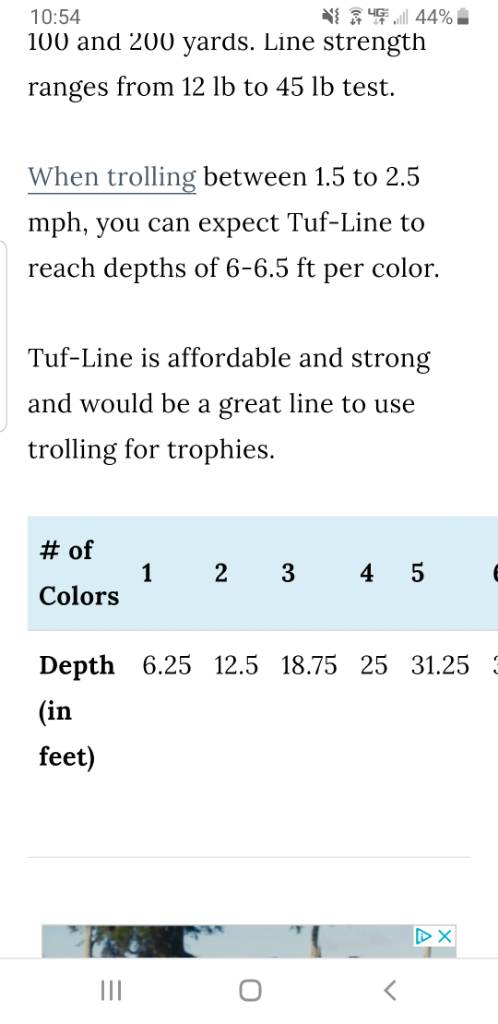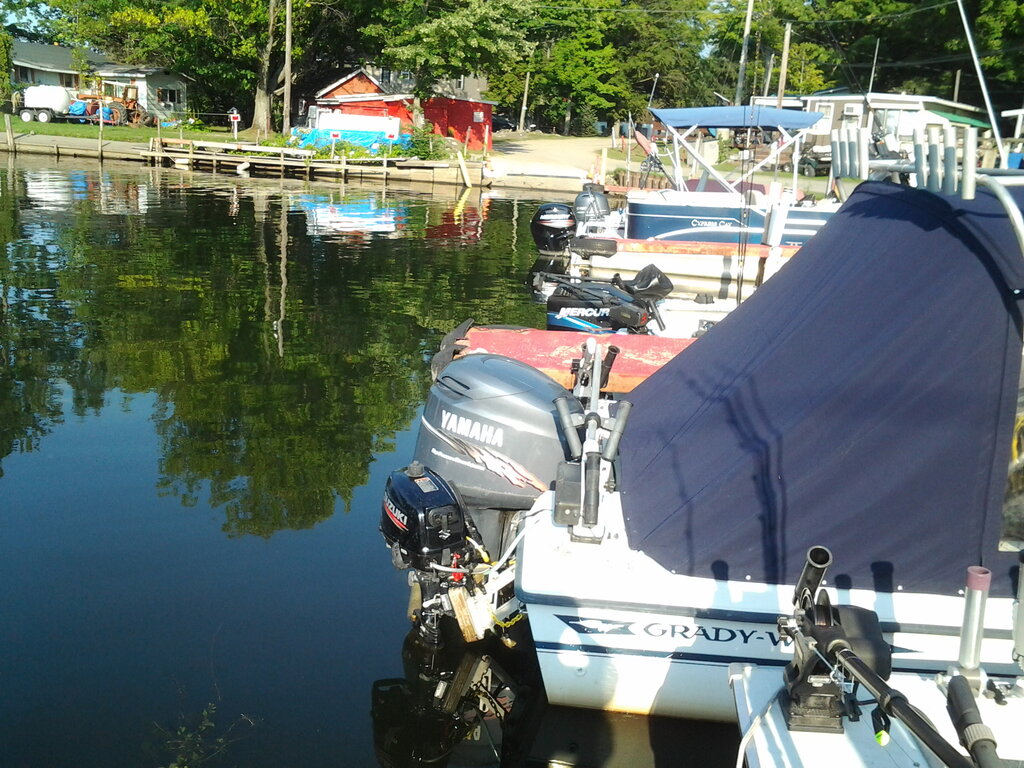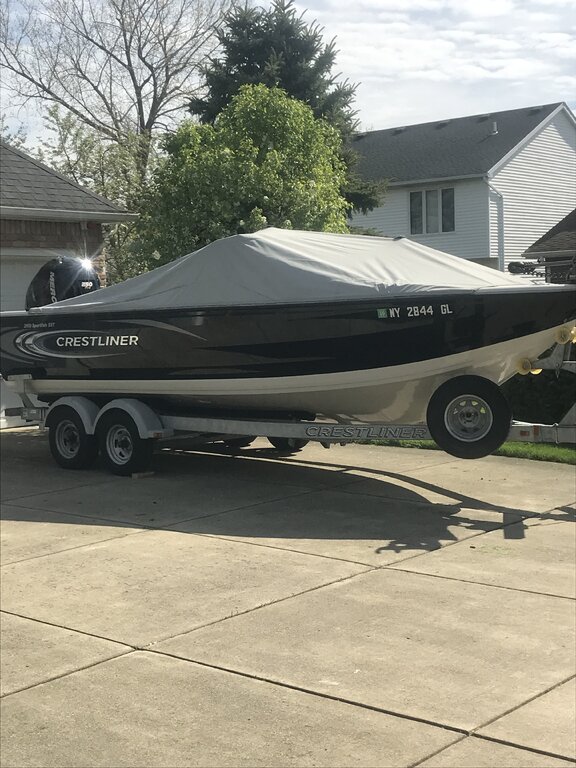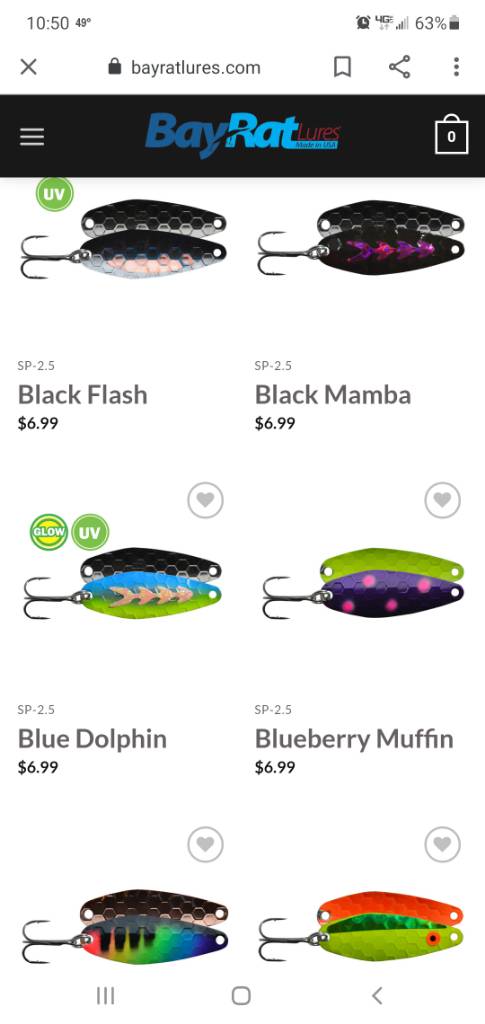-
Posts
735 -
Joined
-
Last visited
Content Type
Profiles
Forums
Events
Gallery
Store
Everything posted by mr 580
-
-
-
I’m not able to do a Willis with the Tufline Microlead. I use black to back uniknot. I’m using Saltist 50’s on my 10 colors as I like the high speed. Using the Tufline Microlead gives me more backer on the 50’s. The Stealth core works good with Willis which I prefer on my other lead core rods. I have been running these combinations a few years.
-
-
Running a fly without an dodger/flasher would not be too productive as a fly on it’s own has little action. The dodger/flasher imparts the action to the fly. If you wish to run a diver without any attractor then a spoon IMO would be more be a better choice.
-
Paid closer attention to the GPS speed on my HB 859CI HD while slow trolling crawler harness today. My speed would read from .8 to 1.0 mph 80% of the time and would bounce a few tenths either way the rest of the time with an occasional bounce to 1.6 and down to as low as .2 . When running on plane at 30 mph it was steady with a drop of a tenth every now and then. Sitting still it bounced around as well from zero to .5 mph. Hope this gives you something to compare to.
-
It really shouldn’t alter idle speed very much as normally you don’t make any timing adjustments. If someone installed the points conversion kit for you, then you should probably ask them about any other adjustments they might have made. If the engine has a carburetor then that usually has the idle adjustment. There is little to no adjustment in a Pertronix kit- just one gap setting in distributor.
-
If you had a Pertronix Electronic System put in the distributor that just replaces the points, condenser and rotor in the distributor. Sometimes the coil is replaced too, but on the marine units I’ve installed the original coil was used. Should have nothing to do with shift linkage other than someone bumping or moving something getting to distributor. The Pertronix is a simple bolt in that can be easily reversed back to original points.
-
You could have electrical interference from another device- when trolling shut other things down 1 by 1 to see if it changes. At the dock turn it on without anything else running see if it changes. Run a separate power wire direct to battery sometimes helps with interference too.
-
You may have an internal antenna interference issue. My Humminbird is inside an electronics cabinet in an aluminum boat and I don’t notice more than a tenth movement either way. I normally am fishing 7 to 15 fow with that boat and keeping my speed/position close to the weeds is key to the program.
-
Some fluctuations in gps speeds are normal especially at slow or stopped conditions. I use a similar model Humminbird on my Lund for weed line trolling and it will fluctuate a couple tenths at 1 mph. I believe what you are seeing at the dock is the unit sensing within its normal deviation so it shows a speed reading. The faster you go and the more distance you cover, the more accurate your speed will be. For open water trolling a Fish Hawk or Depth Raider will give a more accurate reading of trolling speed. In open water I don’t pay much attention to GPS speed other than when I’m running.
-

Favorite Leadcore Brand(s)
mr 580 replied to SamonSez's topic in Questions About Trout & Salmon Trolling?
The Stealthcore and Tufline Microlead are both solid choices. The Stealthcore works well with a Willis knot and seems to hold up well. I use the Tufline Microlead for 10 colors on Saltist 50’s- the smaller diameter allows for more backer however I use different knots as it is too small to easily slide your leader to do the Willis knot. -
X2 on Jann’s Netcraft. They have a good selection of various rod tips and guides so you can match to the rod you are repairing. Sizes vary between mfg and models so best bet is to measure. They do make some “emergency” rod tip kits with several common sizes.
-
The inflatables I’ve had came with expiration codes on the cartridges. IMO there are advantages to the inflatables, but from strictly a dollars and cents view a regular pfd is less money. There are some pfd’s that are pretty comfortable (and warm in cold weather). In the end matter of personal preference.
-
When I started using dipseys over 30 years ago, the charts provided by Luhr Jensen were about as accurate as the ones from Slide Diver. Back in those days we were using mono so it was a real trial and error mess. For me I figure out what works for me and how I fish without paying much attention to printed dive curves. A lot of that stuff is just a starting point to apply to your own situation based on all the variables. I also agree with Les that there is a place in the “tool box” for different types/brands of divers based on application without saying one is better than the others. I try to help people with Slide Divers as the learning curve seems steeper with them. I’ve seen quite a few guys give up on them without giving them a chance.
-

for sale : usa 1988 Grady White Tournament 19"
mr 580 replied to William Fedun's topic in Boats for Sale
-
I believe that Slide Diver discontinued the original heavy weight kit with the 2oz and 4 oz several years ago. They now offer what they call the “Ultimate Weight “ Kit which is a 7 oz weight with a new disc bottom for the larger weight and a big ring. This dives pretty close to 2 to 1. I used to like that 4 oz weight and tried to find more of them but couldn’t - even spoke to SD rep. Been using the Ultimate Kit now late season for a few years.
-

for sale : usa 2013 Crestliner Sportfish 2150 SST $41,500
mr 580 replied to LakeO2150's topic in Boats for Sale
-
-
For walleyes I always run rings on my SD’s as I like how the rod loads. In August when temp is below 50feet, I will use the heavy weight kit with big ring on my inside divers for more depth. Keep my outsides with std weight and ring, but I usually dial in a 1/2 number on the settings. The light bite SD’s do a good job of releasing with “trash fish” on Erie.
-
I use a dive rate of between 2 to 2.5 to 1 for SD’s. The charts aren’t accurate at all. Another thing you can do is to convert your SD numerical numbers to match the dipsey numbers for weight movement then use similar numbers you would for a dipsey. SD’s tend to run shallower for me. Hope this helps.
-
-
-
The Lund Pro V uses a double plated bottom and is likely a heavier hull than the Sea Nymph. So if you have been happy with Sea Nymph, the Lund will be a bit more stable and ride better. That being said you won’t be fishing rougher water or more days than what you could with Sea Nymph. Pro V’s trailer and launch well.
-

Changing out a roller tip on a Shimano roller rod.
mr 580 replied to pole setter's topic in Tackle and Techniques


.png.ac887dbb8eeecb2b307ed2098fba7e50.png)




